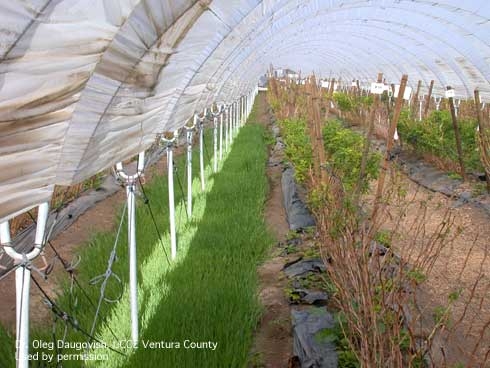
Rather than using herbicides in caneberry growing tunnels, the UC Integrated Pest Management program suggests planting a cover crop to prevent weeds in anchor rows.
Cover crops in anchor rows can suppress weed growth and help to minimize soil erosion and nutrient and sediment loss when it rains. Densely planted cover crops can out compete weed seedlings germinating from the soil and prevent wind-dispersed seeds from reaching the wet soil surface.
Cover crops are especially helpful when managing weeds that are difficult to control with fumigation because of their hard impermeable seed coats (mallows and filaree), or resistance to herbicides such as glyphosate and paraquat (hairy fleabane and horseweed).
Cover crops can be managed with mowing or herbicides to avoid seed production.
For all the details, see the newly revised weed section in the Caneberries Pest Management Guidelines on the UC IPM web site.